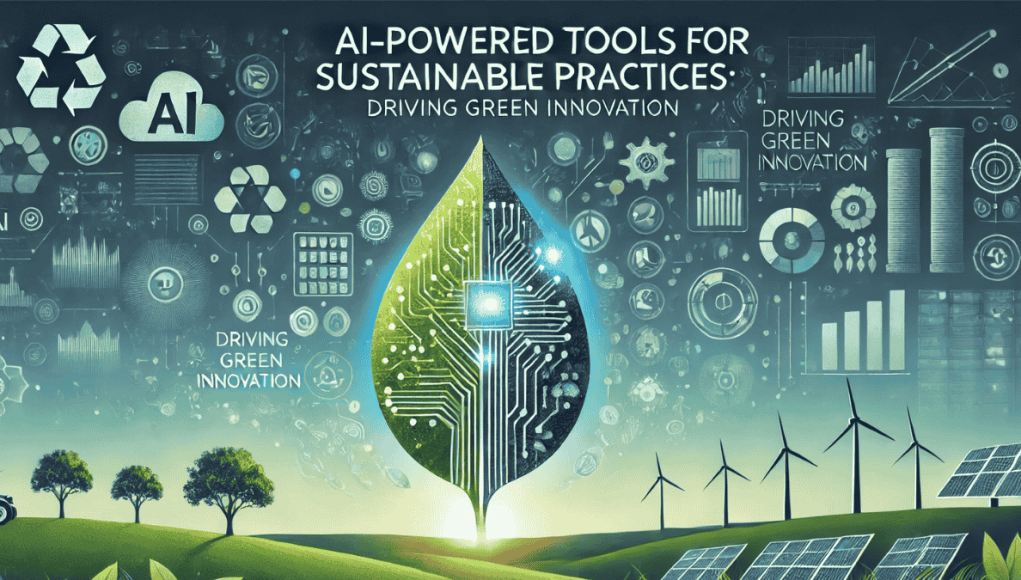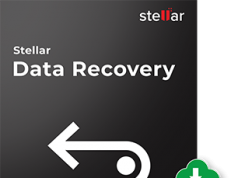Artificial Intelligence (AI) is rapidly transforming industries worldwide, and its application in sustainability practices is gaining momentum. As global environmental concerns intensify, AI-Powered Tools for Sustainable Practices offer innovative solutions to optimize resource management, reduce waste, and drive sustainable development. From agriculture to urban planning, these tools utilize machine learning, big data, and automation to enhance efficiency and minimize ecological footprints.
This article will explore the growing importance of AI in sustainability and provide an in-depth review of 15 powerful AI tools that are making strides in sustainability. These tools are not only aiding businesses in reducing their carbon footprints but also helping industries make more eco-friendly choices. Let’s dive into the utility and benefits of these technologies, before reviewing some of the best AI-powered tools for sustainable practices.
Importance of AI-Powered Tools for Sustainable Practices
- Enhanced Efficiency: AI helps in optimizing resource utilization, reducing waste, and improving overall process efficiency. This includes energy management, waste reduction, and resource conservation, which contribute to long-term sustainability.
- Predictive Maintenance: With AI, industries can predict when machines will need maintenance, reducing downtime and preventing overuse of resources. This results in both financial savings and environmental benefits.
- Data-Driven Decision Making: AI enables businesses to harness big data, leading to more informed decisions about sustainability. These tools analyze vast amounts of information to provide actionable insights.
- Reduced Carbon Footprint: AI helps in tracking emissions and energy consumption, offering ways to reduce carbon footprints. It can optimize processes to lower greenhouse gas emissions and promote cleaner operations.
- Innovation in Agriculture: AI tools improve agricultural practices by optimizing water usage, enhancing soil health, and increasing crop yields with fewer resources, helping address food security and environmental degradation.
Review of AI-Powered Tools for Sustainable Practices
Here are 15 AI-powered tools that are at the forefront of sustainability innovation:
1. IBM Environmental Intelligence Suite
Overview:
IBM’s Environmental Intelligence Suite is a comprehensive AI-powered platform designed for monitoring and mitigating environmental risks. By analyzing weather data, climate risks, and environmental trends, the tool helps organizations make more sustainable choices.
Features:
- Real-time weather forecasting for disaster readiness.
- Climate risk assessment for supply chains.
- Automated carbon emissions tracking.
- Predictive analytics for energy usage.
- Tools for regulatory compliance.
- AI-driven disaster response planning.
- Integration with sustainability reporting frameworks.
Pros:
- Comprehensive data analysis.
- Helps businesses comply with environmental regulations.
- Reduces operational costs by optimizing resource use.
Cons:
- Can be complex to integrate into existing systems without expert help.
2. Google DeepMind
Overview:
Google’s DeepMind AI technology is used in various industries to enhance sustainability. It has notably reduced energy consumption in data centers by up to 40% by optimizing cooling systems.
Features:
- Energy optimization algorithms.
- Smart cooling management for data centers.
- AI-driven decision-making tools for energy savings.
- Ability to forecast energy demand.
- Predictive analytics to prevent power outages.
- Customizable AI models for different industry needs.
- Continuous improvement through machine learning.
Pros:
- Substantial energy savings.
- Proven efficiency in large-scale operations.
- Supports sustainability goals in the tech industry.
Cons:
- Mostly applicable to large-scale data centers.
3. Pano AI
Overview:
Pano AI specializes in wildfire detection, helping communities mitigate fire risks in real-time. Its advanced machine learning models analyze data from multiple sources to detect fire hazards early.
Features:
- Real-time wildfire detection and monitoring.
- AI-based threat classification.
- Cloud-based data analytics.
- Integration with emergency response systems.
- Satellite data processing for broader coverage.
- Advanced image recognition technology.
- Immediate risk notifications to relevant authorities.
Pros:
- Fast, accurate detection of fire hazards.
- Helps reduce damage from natural disasters.
- Wide applicability in forest management.
Cons:
- Primarily focused on wildfire scenarios.
4. NatureDots
Overview:
NatureDots leverages AI to improve aquafarming practices, focusing on sustainable fishery management. This tool provides real-time monitoring and helps optimize conditions for healthier and more productive aquafarms.
Features:
- Real-time monitoring of water quality.
- AI-driven recommendations for optimal farming conditions.
- Predictive analytics for fish health and growth.
- Remote sensing and automated reporting.
- AI tools for minimizing feed and resource wastage.
- Integration with other aquaculture management platforms.
- Sustainability reporting for fisheries.
Pros:
- Enhances productivity in aquafarming.
- Reduces environmental impact.
- Provides data for more sustainable seafood production.
Cons:
- Specialized for aquaculture, limiting wider applicability.
5. Microsoft AI for Earth
Overview:
Microsoft’s AI for Earth initiative aims to address global environmental challenges through AI-driven tools. It focuses on biodiversity, agriculture, water conservation, and climate change, helping organizations make data-driven sustainability decisions.
Features:
- Cloud-based AI tools for environmental monitoring.
- Ecosystem health tracking using AI.
- Solutions for sustainable agriculture and land use.
- AI models for climate change impact prediction.
- Water conservation tools.
- Grants for AI sustainability projects.
- Open data sets for collaborative environmental solutions.
Pros:
- Extensive support for various environmental causes.
- Large-scale data processing capabilities.
- Collaborative platform for global sustainability projects.
Cons:
- Requires technical expertise to implement fully.
6. Tesla Autopilot
Overview:
Tesla’s Autopilot system uses AI to enhance autonomous driving, reducing carbon emissions through optimized driving routes and efficient energy use in electric vehicles.
Features:
- AI-driven autonomous driving.
- Smart energy consumption management.
- Efficient route mapping to minimize fuel usage.
- AI-assisted safety features.
- Continuous over-the-air updates.
- Integration with Tesla’s energy products (e.g., solar panels, Powerwall).
- AI-based accident avoidance technology.
Pros:
- Promotes cleaner transportation.
- Reduces fuel consumption and emissions.
- Constant improvements through machine learning.
Cons:
- Limited to Tesla’s proprietary systems.
7. Amazon SageMaker
Overview:
Amazon SageMaker is an AI-powered machine learning platform that helps businesses deploy models for optimizing their sustainability practices. Its use spans from supply chain optimization to energy-efficient packaging.
Features:
- Automated model training and deployment.
- AI-driven insights for energy and resource efficiency.
- Waste reduction algorithms.
- Supply chain optimization tools.
- Customizable machine learning models.
- Integration with AWS sustainability initiatives.
- Scalability for large enterprises.
Pros:
- Comprehensive machine learning platform.
- Can be customized for different sustainability needs.
- Scalable for large-scale projects.
Cons:
- Requires AWS infrastructure.
8. Nokia AVA Energy Efficiency
Overview:
Nokia’s AVA Energy Efficiency solution uses AI to reduce energy consumption in telecommunication networks. It optimizes energy usage across radio access networks (RAN) to lower emissions and operational costs.
Features:
- AI-driven energy consumption management.
- Optimization of RAN energy use.
- Real-time monitoring and analytics.
- Fast deployment across networks.
- Energy efficiency reports and recommendations.
- AI tools for cost savings.
- Integration with telecom industry standards.
Pros:
- Reduces energy costs for telecom operators.
- Decreases environmental impact.
- Quick deployment.
Cons:
- Limited to the telecommunications sector.
9. Siemens MindSphere
Overview:
Siemens MindSphere is an open IoT operating system that integrates AI to monitor and optimize the performance of industrial assets. By analyzing real-time data from machinery and energy systems, it enhances resource efficiency and drives sustainable manufacturing practices.
Features:
- AI-powered data analytics for machine performance.
- Real-time monitoring of energy usage and emissions.
- Predictive maintenance tools to prevent machine failures.
- Integration with IoT devices for comprehensive tracking.
- Customizable dashboards for sustainability reporting.
- AI tools for optimizing energy consumption.
- Cloud-based platform for easy scaling.
Pros:
- Reduces downtime and energy consumption.
- Provides real-time insights for quick decision-making.
- Scalable for various industrial applications.
Cons:
- High initial setup cost for small businesses.
10. Blue River Technology
Overview:
Blue River Technology leverages AI for precision agriculture, specifically to optimize the application of herbicides. Its “See & Spray” technology uses AI to detect and spray weeds only where needed, reducing the use of chemicals and promoting more sustainable farming practices.
Features:
- AI-driven weed detection technology.
- Real-time crop monitoring and analysis.
- Precision spraying to minimize chemical usage.
- Machine learning algorithms for crop health management.
- Customizable for different crop types.
- Autonomous operation capabilities.
- Reduces environmental impact through targeted applications.
Pros:
- Decreases the use of harmful chemicals.
- Enhances crop yield while conserving resources.
- Fully autonomous, reducing labor costs.
Cons:
- Currently focused on large-scale farming operations.
11. Climeworks
Overview:
Climeworks utilizes AI to capture and store CO2 from the atmosphere, helping to combat climate change. Their AI systems optimize the CO2 capture process, ensuring that the system runs efficiently and scales effectively to remove large amounts of CO2.
Features:
- AI-optimized CO2 capture technology.
- Real-time monitoring of carbon capture efficiency.
- Cloud-based analytics for process optimization.
- Scalable to meet varying CO2 reduction needs.
- Predictive maintenance for carbon capture equipment.
- Sustainable design using renewable energy sources.
- Integration with carbon accounting tools.
Pros:
- Contributes directly to reducing atmospheric CO2.
- Scalable solution for large carbon emitters.
- Sustainable, renewable-powered processes.
Cons:
- High operational costs make it challenging for small businesses.
12. Aladdin Climate by BlackRock
Overview:
Aladdin Climate is a platform that integrates AI to help businesses assess climate risks in their investment portfolios. It uses big data to analyze climate impacts and recommends strategies for reducing exposure to climate-related risks.
Features:
- AI-powered climate risk assessments.
- Tools for analyzing carbon emissions in investments.
- Climate scenario analysis.
- Predictive models for future climate impacts.
- Risk management dashboards.
- Real-time data integration from multiple sources.
- Customizable reporting tools for investors.
Pros:
- Provides actionable insights on climate risks.
- Helps businesses align with global climate goals.
- Customizable for various industries and investment needs.
Cons:
- Primarily focused on large investment firms.
13. EcoBot
Overview:
EcoBot uses AI to assist in environmental reporting, focusing on sustainability metrics for construction and industrial projects. The tool provides real-time analytics to track waste management, energy use, and resource efficiency, helping organizations adhere to environmental regulations.
Features:
- AI-powered environmental reporting tools.
- Real-time tracking of waste management and resource use.
- Predictive analytics for energy consumption.
- Compliance tracking for environmental regulations.
- Customizable sustainability reports.
- Cloud-based data storage and analysis.
- Integration with project management software.
Pros:
- Helps businesses stay compliant with regulations.
- Provides real-time sustainability insights.
- Easy to integrate with existing systems.
Cons:
- Limited customization for smaller projects.
14. Watersight by Schneider Electric
Overview:
Watersight, developed by Schneider Electric, is an AI-powered water management tool that helps utilities and businesses optimize water usage. By analyzing data from sensors, it ensures efficient water distribution and reduces waste.
Features:
- AI-driven water usage analytics.
- Real-time monitoring of water flow and consumption.
- Predictive tools for water demand forecasting.
- Leak detection and preventive maintenance features.
- Automated water distribution optimization.
- Integration with energy management systems.
- Customizable reporting for regulatory compliance.
Pros:
- Reduces water waste and costs.
- Supports sustainable water management.
- AI-powered insights improve operational efficiency.
Cons:
- High setup costs for small utilities.
15. OnFarm Systems
Overview:
OnFarm Systems provides AI-powered solutions for precision agriculture, focusing on data-driven insights to improve farm productivity while minimizing resource use. It aggregates data from various sources to offer recommendations on irrigation, planting, and fertilizer use.
Features:
- AI-driven farm management tools.
- Real-time data aggregation from soil sensors and weather stations.
- Predictive analytics for crop yields.
- Smart irrigation recommendations based on soil moisture.
- Fertilizer and resource usage optimization.
- Customizable dashboards for monitoring farm operations.
- Integration with existing farm management platforms.
Pros:
- Enhances farm productivity with data-driven insights.
- Reduces water and fertilizer use.
- Easy integration with other agricultural technologies.
Cons:
- Requires upfront investment in sensor technology.
Also Read: Best AI Tools for Agricultural Robotics in 2024: Comprehensive Review
Conclusion
AI-Powered Tools for Sustainable Practices are proving to be indispensable in the quest for sustainability across various industries. From reducing carbon emissions and energy use to optimizing agricultural practices, these tools provide practical, scalable solutions for a greener future. As the global push toward sustainability continues, the adoption of AI technologies will play a crucial role in transforming industries and ensuring that we can meet our environmental goals.





